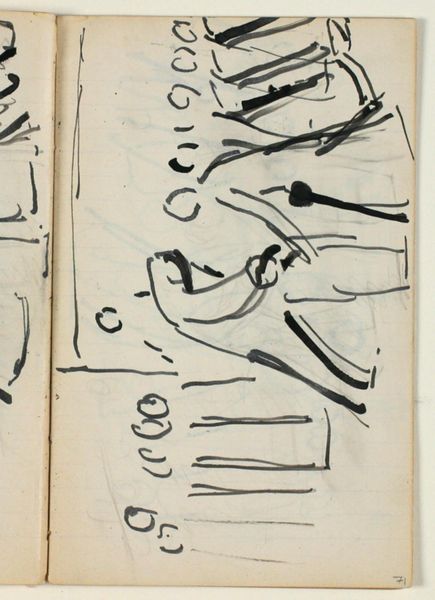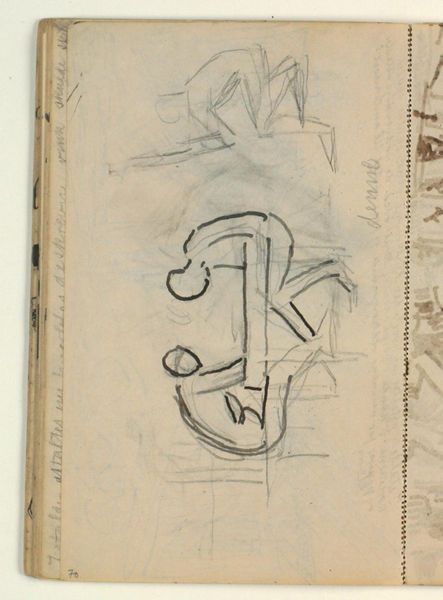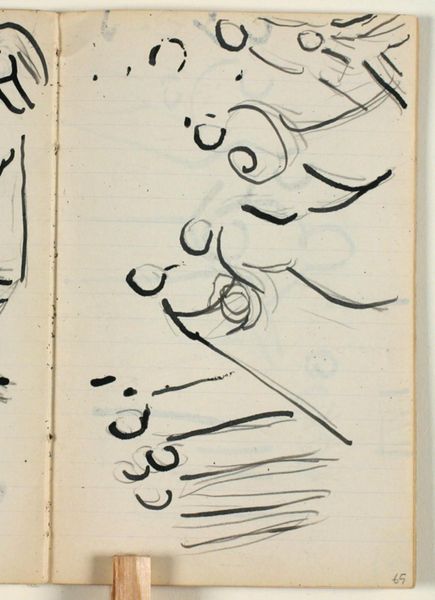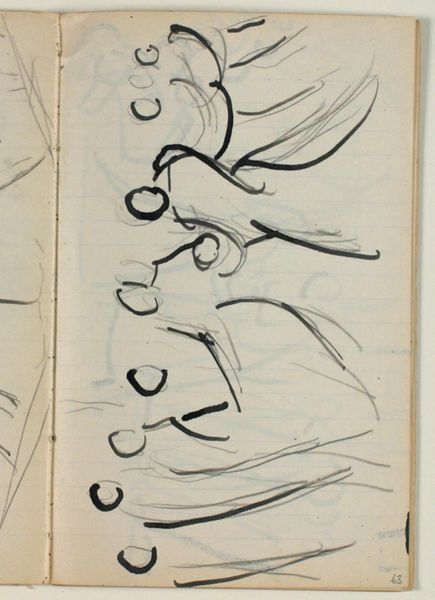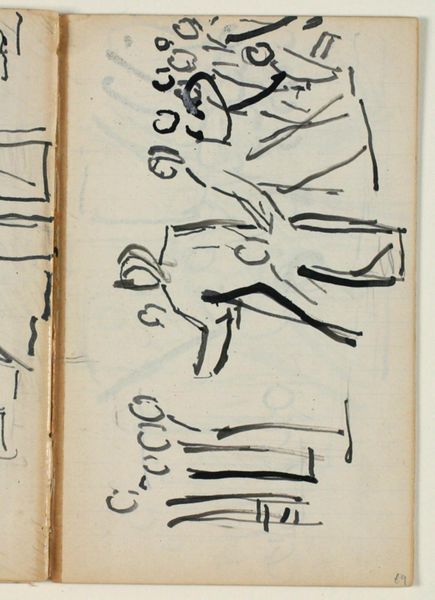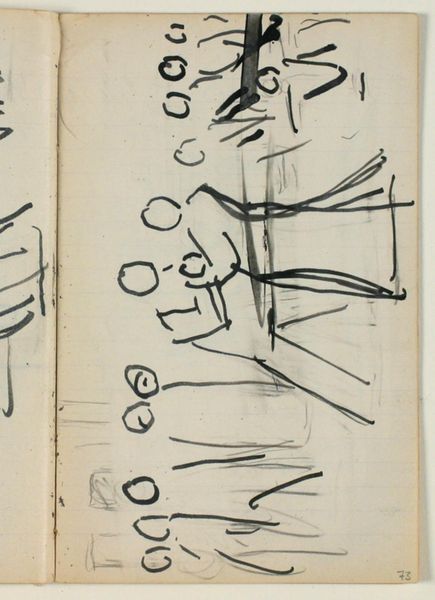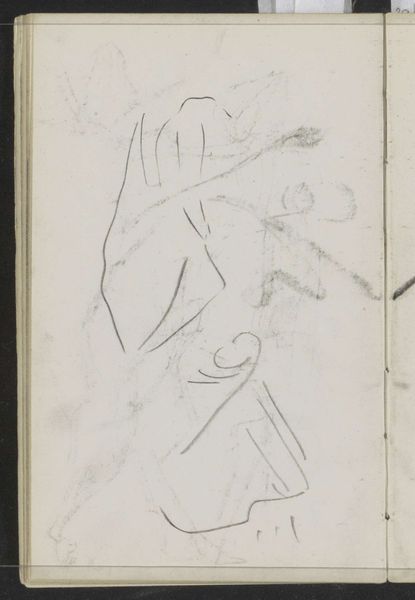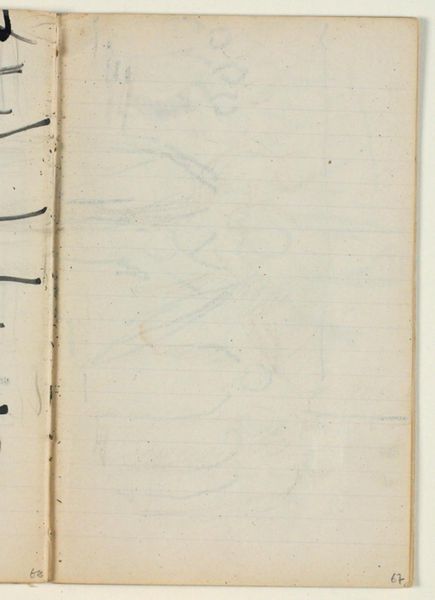
Udkast til "Kristus velsigner de små børn" 1937 - 1938
0:00
0:00
Dimensions: 178 mm (height) x 111 mm (width) x 5 mm (depth) (monteringsmaal), 178 mm (height) x 111 mm (width) (bladmaal)
Curator: We're looking at "Udkast til 'Kristus velsigner de små børn'," or "Draft for 'Christ Blessing the Children'," a drawing created by Niels Larsen Stevns between 1937 and 1938, currently residing here at the SMK. Editor: My first thought? Stark simplicity. The monochrome strokes, the minimalism... it has a rawness that really draws you in. It looks like something sketched in a notebook, intimate, immediate. Curator: It's exactly that. Consider the context: Stevns was grappling with themes of faith and social responsibility amidst a Europe inching towards war. This sketch is more than a religious scene; it embodies the universal desire for protection and hope, especially for the vulnerable. The children represent the future, blessed not in a lavish cathedral, but within the reach of simple lines on paper. Editor: Yet, the formal arrangement has its own power. Notice how the linear marks generate the shapes and also denote a structure. He uses strokes of varying weight and length to suggest the light on and volume of bodies in a crowd. You can make out forms and understand massing without excess elaboration. Curator: Absolutely. And if we consider Stevns’ involvement in movements advocating for social justice, this rendering underscores the radical potential of the biblical story. Blessing becomes an act of solidarity, and these almost rudimentary strokes visualize the pressing demand of caring and providing. Editor: Perhaps, though I read the emphasis on spare mark-making more formally. How a reduction can convey so much. Stevns gives you just enough visual information to understand the picture's components and organize these into figural relationships on the plane of the drawing. The result transcends historical reference. Curator: Ultimately, whether viewing it from a place of formal elegance or within its complicated historical frame, what remains undeniable is the tenderness embodied in this quick work—Stevns uses simple figures to suggest themes of grace, care, and, on a wider register, societal reform. Editor: Yes, regardless of interpretation, the strength of line certainly compels engagement. A valuable peek behind the curtain.
Comments
No comments
Be the first to comment and join the conversation on the ultimate creative platform.
